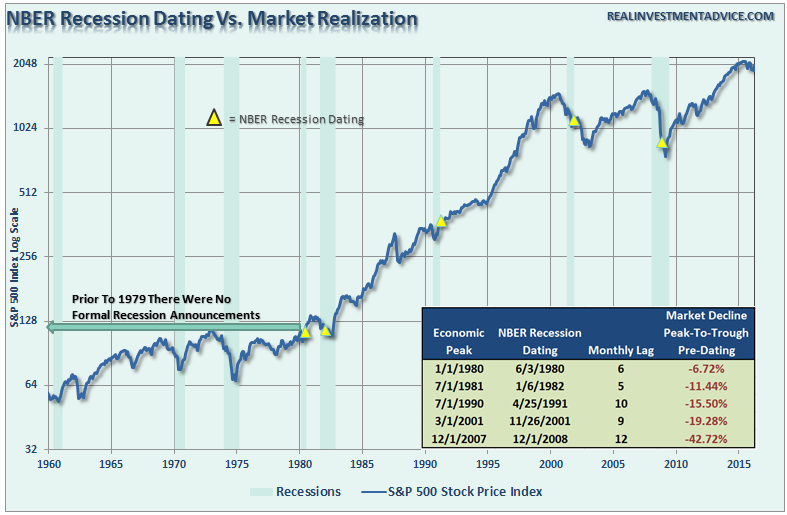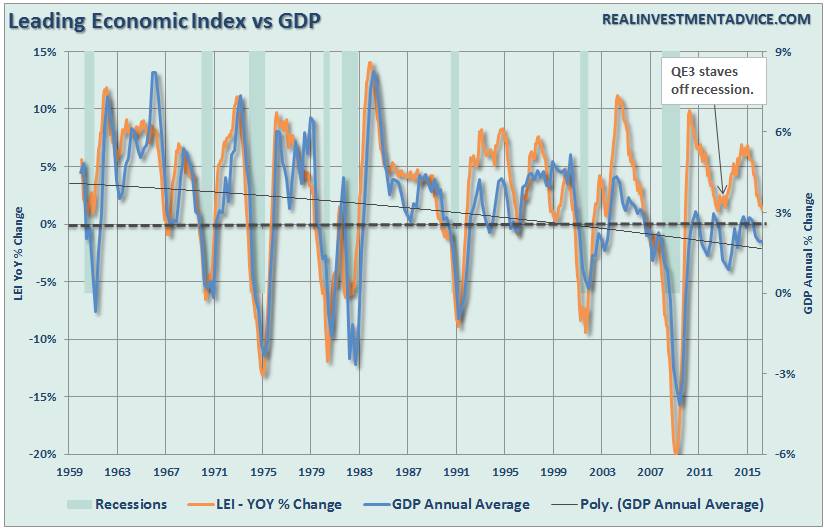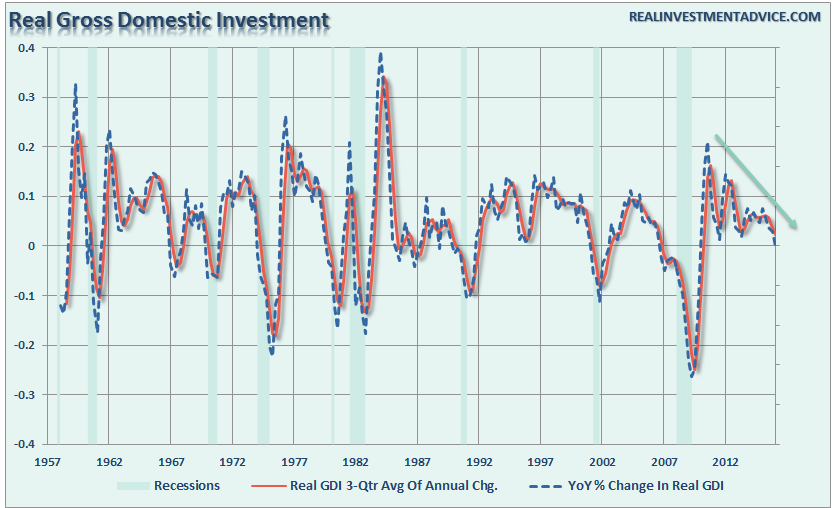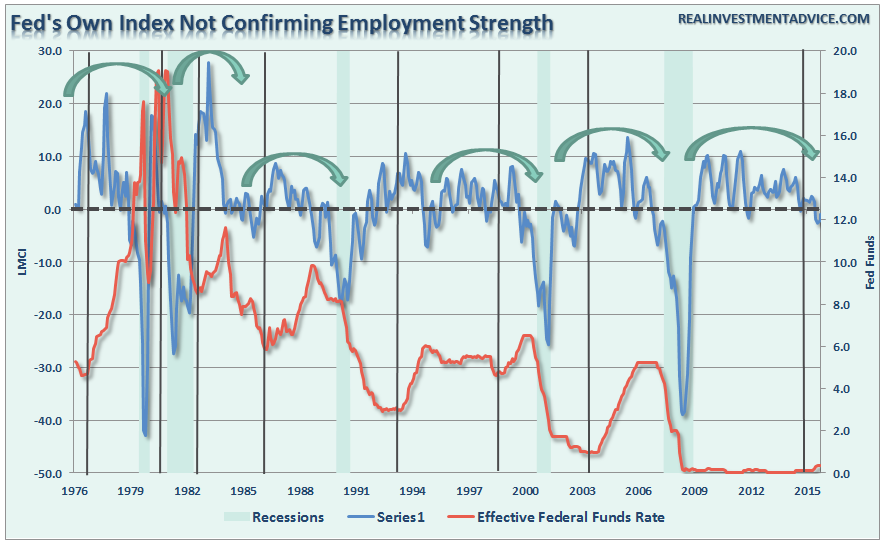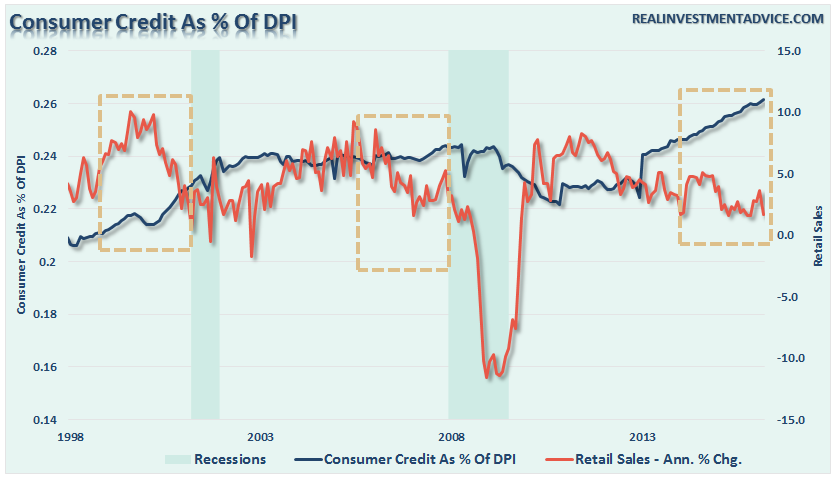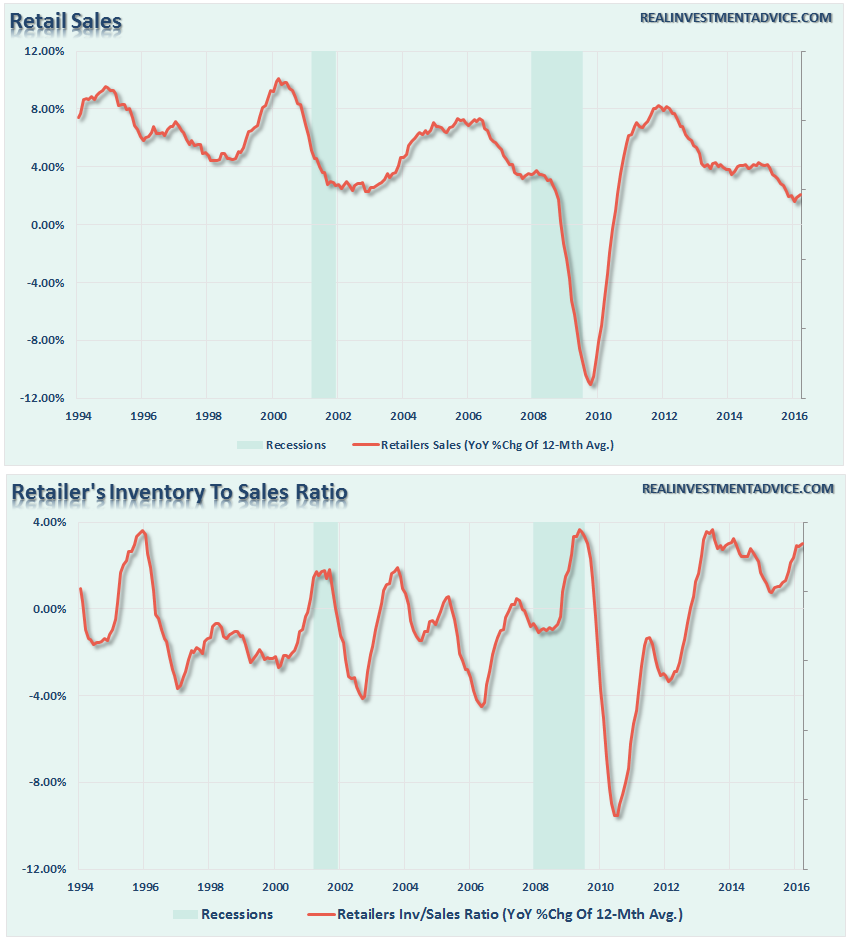As we begin to wrap up the 2nd quarter of the year, I thought it was time to revisit the economy as the backdrop against expectations for stronger economic growth, rising inflationary pressures and an increase in interest rates and expectations.
While there is currently a plethora of commentary strongly suggesting that the U.S. economy is nowhere near recession, it should be remembered the economy has NEVER been in a recession until future negative data revisions revealed it to be the case. Unfortunately, for investors, by the time a recession is widely recognized and accepted by the mainstream media and analysts, it will be far too late to do anything about it.
As I have stated many times in the past:
Recessions are coincident with market declines ONLY IN HINDSIGHT. The reason is due to the annual revisions to past economic data that only reveal the start and end of the recession after the fact. (The chart below shows this effect.)
Importantly, recessions are not the driver of financial markets, but it is the market that ultimately drives recessions. This is why the Federal Reserve is so focused on keeping asset prices elevated in order to mitigate a loss of consumer confidence which would push the economy into a recession.
As shown above, in a number of cases over the past century, a bear market in U.S. stocks was well underway long before a recession had been recognized. This is why waiting for the confirmation of a recession, before taking actions to protect your investment portfolio, will likely too late.
With the economy now more than 6 years into an expansion, which is long by historical standards, the question for you to answer by looking at the charts below is:
Are we closer to an economic recession or a continued expansion?
How you answer that question should have a significant impact on your investment outlook as financial markets tend to lose roughly 30% on average during recessionary periods. However, with margin debt at record levels, earnings deteriorating and interest rate spreads narrowing, this is hardly a normal market environment within which we are currently invested.
Leading Economic Indicators
Durable Goods & Capacity Utilization Rates
Investment
ISM Composite Index & Transportation
Employment & Industrial Production
Retail Sales
Inventory Ratios
PCE & Imports
Corporate Profit Markets vs. Valuation
The Broad View
If you are expecting an economic recovery, and a continuation of the bull market, then the economic data must begin to improve markedly in the months ahead. The problem has been that each bounce in the economic data has failed within the context of a declining trend. This is not a good thing and is why we continue to witness an erosion in the growth rates of corporate earnings and profitability. Eventually, that erosion combined, with excessive valuations, will weigh on the financial markets.
For the Federal Reserve, these charts make the case that continued monetary interventions are not healing the economy, but rather just keeping it afloat by dragging forward future consumption. The problem now is the Fed has opted, by tightening monetary policy, to not “refill the punchbowl.” Eventually, when the drinks run out, the party comes to an end.
The markets, falling inflation indicators, and plunging interest rates are all suggesting the same.

